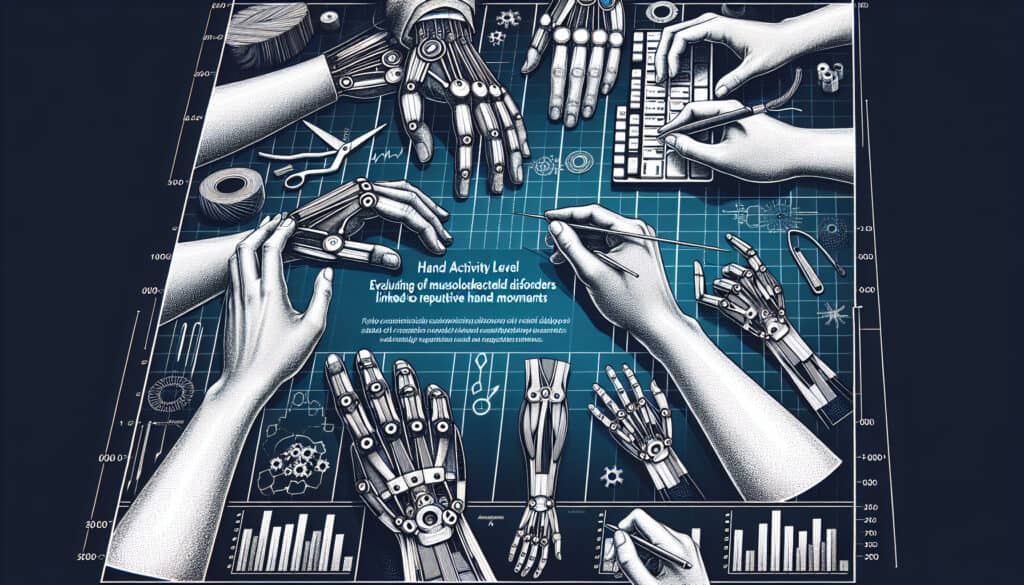To assess the risk of musculoskeletal disorders associated with repetitive hand work.
- المنهجيات: الهندسة, تصميم المنتج, إدارة المشاريع
HAL (Hand Activity Level)

HAL (Hand Activity Level)
- التحسين المستمر, بيئة العمل, العوامل البشرية, Human Factors Engineering (HFE), التصنيع اللين, تحسين العمليات, إدارة الجودة, إدارة المخاطر, السلامة
الهدف:
كيفية استخدامه:
- A rating scale that combines the frequency of hand exertions and the duty cycle to assess the level of hand activity in a job. It is used to identify jobs with a high risk of hand and wrist injuries.
الإيجابيات
- Provides a quantitative measure of hand activity; Helps to identify high-risk jobs.
السلبيات
- Can be subjective and difficult to rate accurately; Does not account for all risk factors.
الفئات:
- بيئة العمل, إدارة المخاطر
الأفضل لـ
- Assessing the ergonomic risk of a manufacturing or assembly line job.
The Hand Activity Level (HAL) methodology is often utilized during the design phase of products and manufacturing processes where the risk of repetitive strain injuries is high, specifically in industries such as automotive, electronics, and consumer goods manufacturing. In these sectors, assessing ergonomic risks is paramount for compliance with labor regulations and enhancing worker safety and productivity. The HAL rating employs a systematic approach to quantifying the intensity of hand actions, combining the frequency of hand movements with the duty cycle to generate a comprehensive assessment of hand activity throughout various tasks. This quantitative measure allows design engineers and ergonomists to identify specific jobs that exceed recommended thresholds, channeling efforts towards ergonomically sound solutions like redesigning workstations, introducing assistive tools, or implementing job rotation to mitigate risks. It is typically initiated by ergonomists or health and safety professionals collaborating with design teams, operation managers, and workers themselves, ensuring an inclusive approach that incorporates feedback from those directly affected. Additionally, the methodology facilitates benchmarking across similar job functions and environments, helping organizations set challenges for continuous improvement in workplace ergonomics. Data generated from HAL assessments may also serve as evidence for business cases related to healthcare cost reductions, workforce optimization, and enhanced employee well-being, contributing to an organization’s sustainability goals.
الخطوات الرئيسية لهذه المنهجية
- Determine the frequency of hand exertions during the job cycle.
- Assess the duty cycle by calculating the percentage of time hands are actively engaged.
- Multiply the frequency of exertions by the duty cycle to derive the HAL rating.
- Interpret the HAL rating in relation to established ergonomic risk thresholds.
- Identify specific tasks within the job that contribute to elevated HAL ratings.
- Recommend ergonomic interventions based on the analyzed HAL ratings.
نصائح للمحترفين
- Integrate real-time monitoring tools with HAL analysis to capture immediate data on hand activity, allowing for dynamic adjustments in job design.
- Combine HAL ratings with qualitative assessments from workers about their experiences to identify contextual factors that may elevate risk beyond numerical data.
- Utilize historical HAL data across similar tasks to benchmark and predict potential risks in new job designs, facilitating proactive ergonomics improvements.
لقراءة عدة منهجيات ومقارنتها, نوصي باستخدام
> مستودع المنهجيات الشامل <
مع أكثر من 400 منهجية أخرى.
نرحب بتعليقاتكم على هذه المنهجية أو المعلومات الإضافية على قسم التعليقات أدناه ↓، وكذلك أي أفكار أو روابط متعلقة بالهندسة.
منشورات ذات صلة
محاكاة مونت كارلو
الاختبار المستند إلى النموذج
التحقق من النموذج
بحوث الأساليب المختلطة
تدقيق الأخطاء (بوكا يوك)
اختبار الملف الشخصي للمهمة